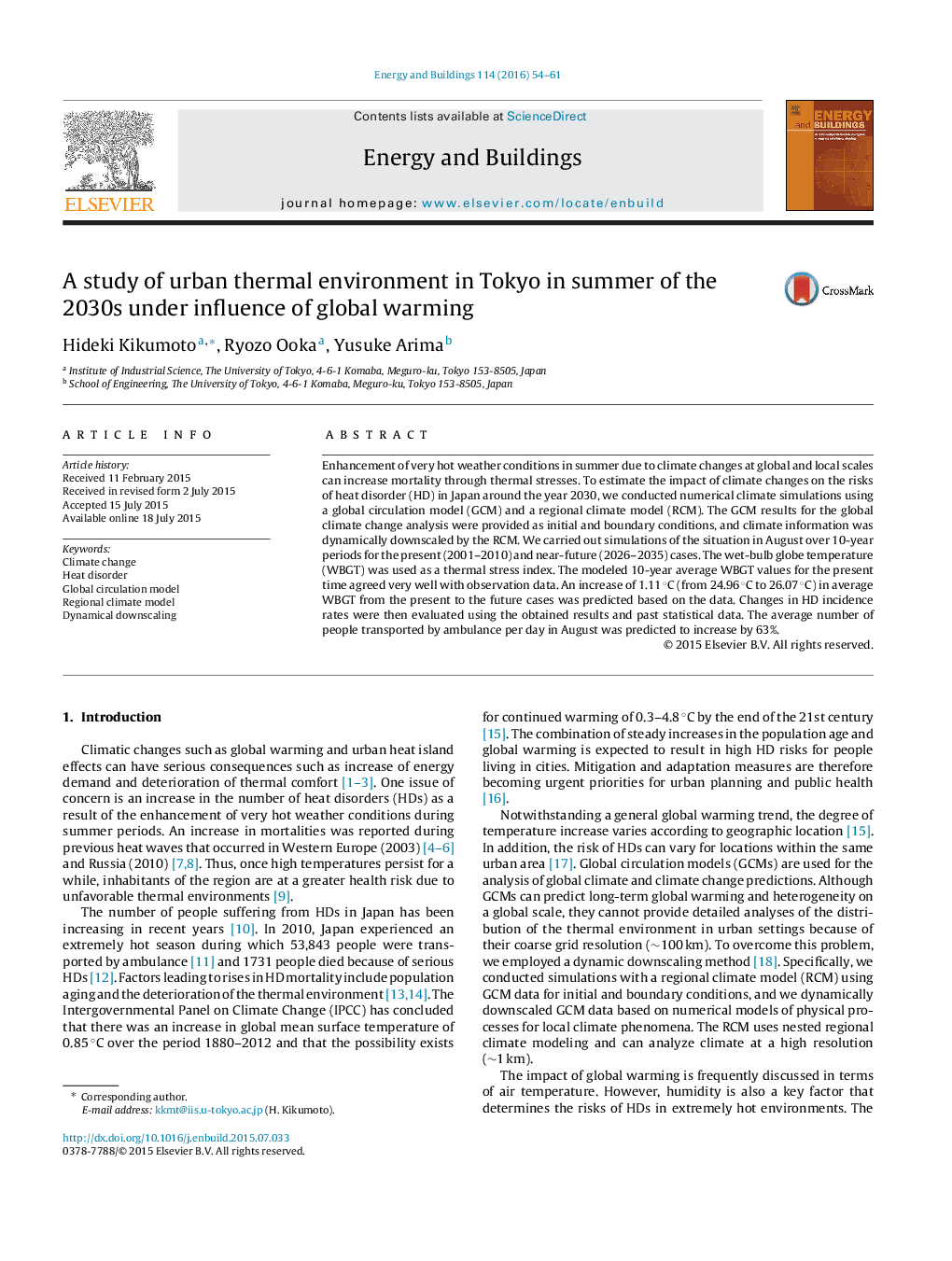| Article ID | Journal | Published Year | Pages | File Type |
|---|---|---|---|---|
| 262116 | Energy and Buildings | 2016 | 8 Pages |
•Heat disorder risks in Tokyo around the year 2030 were analyzed.•Data of a global circulation model was downscaled by a regional climate model.•Averaged WBGT of 10 years in the current situation agreed well with observed data.•Heat disorder risks in August were predicted to increase by 63% in 2030s.
Enhancement of very hot weather conditions in summer due to climate changes at global and local scales can increase mortality through thermal stresses. To estimate the impact of climate changes on the risks of heat disorder (HD) in Japan around the year 2030, we conducted numerical climate simulations using a global circulation model (GCM) and a regional climate model (RCM). The GCM results for the global climate change analysis were provided as initial and boundary conditions, and climate information was dynamically downscaled by the RCM. We carried out simulations of the situation in August over 10-year periods for the present (2001–2010) and near-future (2026–2035) cases. The wet-bulb globe temperature (WBGT) was used as a thermal stress index. The modeled 10-year average WBGT values for the present time agreed very well with observation data. An increase of 1.11 °C (from 24.96 °C to 26.07 °C) in average WBGT from the present to the future cases was predicted based on the data. Changes in HD incidence rates were then evaluated using the obtained results and past statistical data. The average number of people transported by ambulance per day in August was predicted to increase by 63%.
